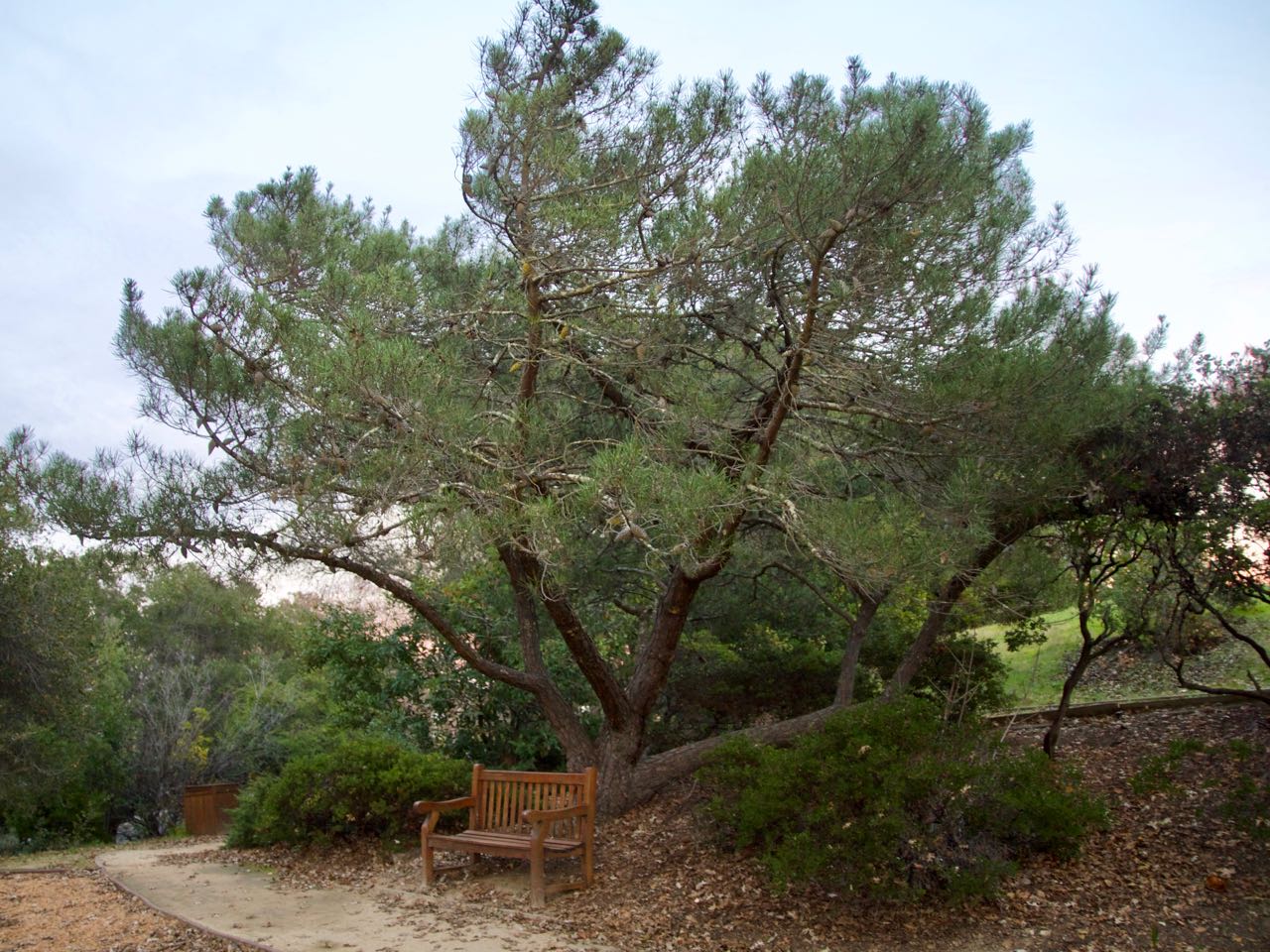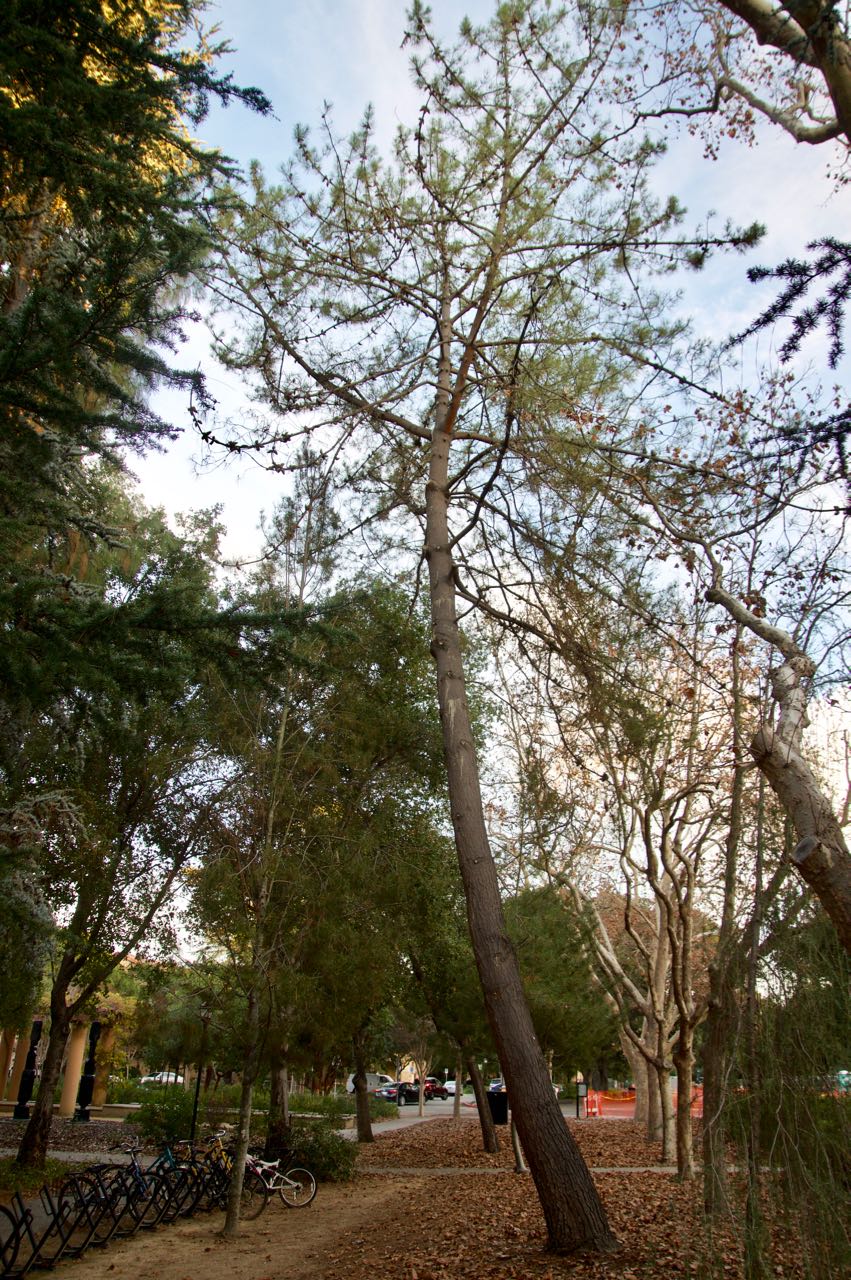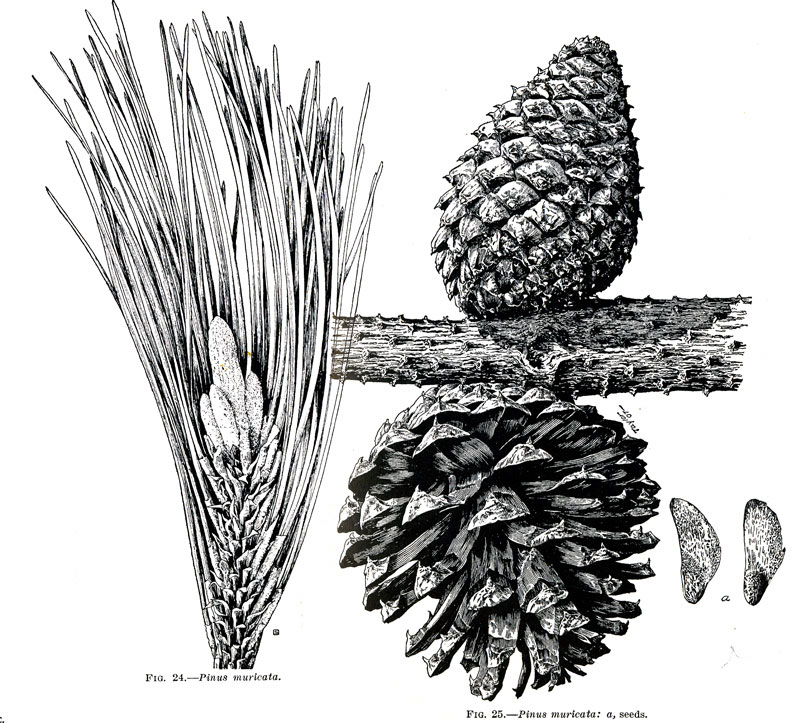Pinus muricata
 bishop pine
bishop pine
Bishop pine is sometimes known as pricklecone pine because of the prickles on the handsome, small cones that reach about 3 inches in length and have the same arrangement as those of its giant relative, the Monterey pine. Many of the cones occur in pairs. This pine grows wild north of San Francisco Bay and south of Monterey. The 4-inch needles are in bundles of two, and the developing candles in spring have a distinctive purplish cast.
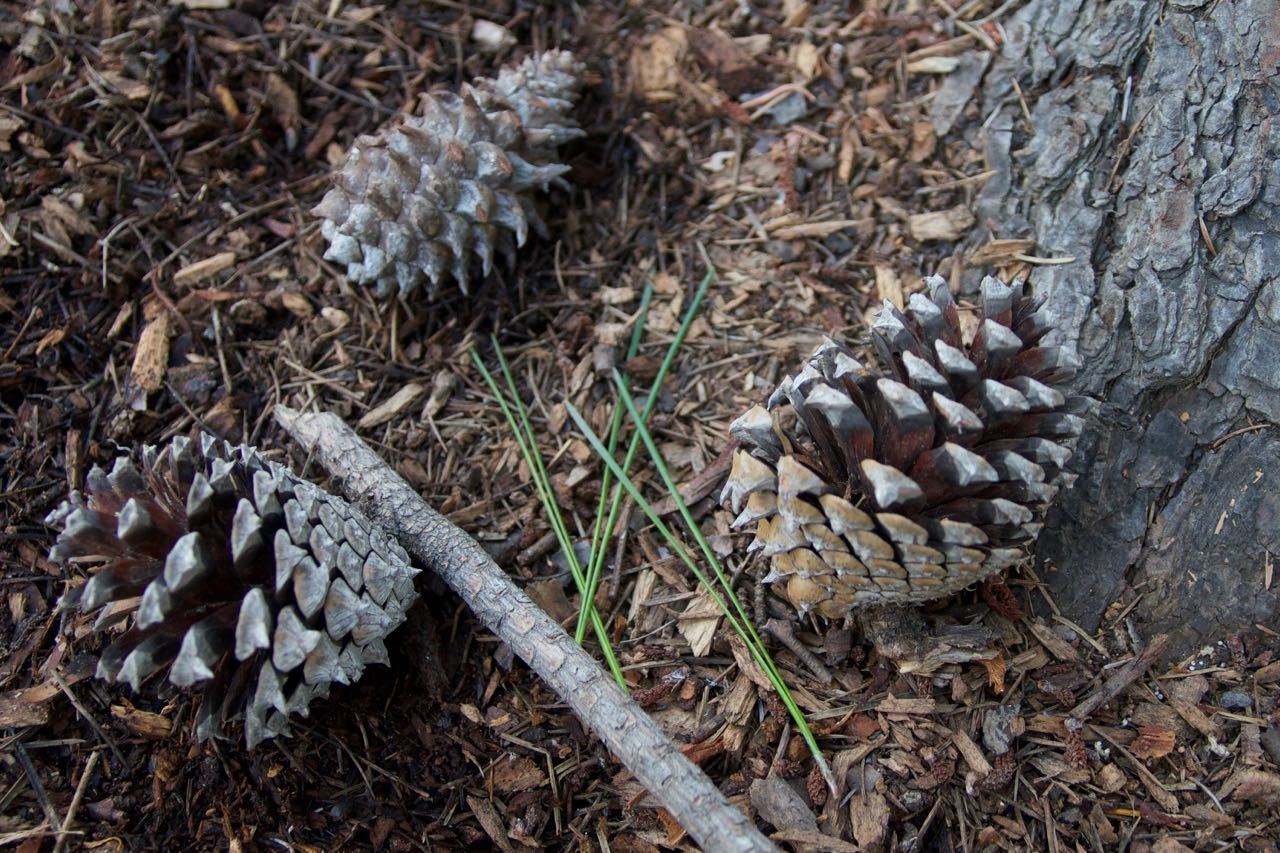
Bishop pine is favored as a moderately sized alternative to Monterey pine, but has proved to be subject to sudden death from beetle attack, especially where planted in groups. The tiny ips beetles, also known as engraver beetles, emerge on warm summer days after a youth spent safely chewing at the cambium layer below the bark. One may notice piles of powder on the bark, forced out of tunnels that later will be a home for unfriendly fungi.
A specimen with wildly diverging trunks is thriving on Campus Drive near the north corner of Taube South. Another stands at the southeast corner of the Casper Dining Commons. One of a pair remains in the conifer display at the south face of Landau Economics on Jane Stanford Way. Few others remain. An extensive 1959 planting left no survivors in the area of the Serra Street and Campus Drive intersection. Eight succumbed in the 1970s behind 836 Santa Fe Avenue alone. There is a single tree in Lathrop Park near the play area.
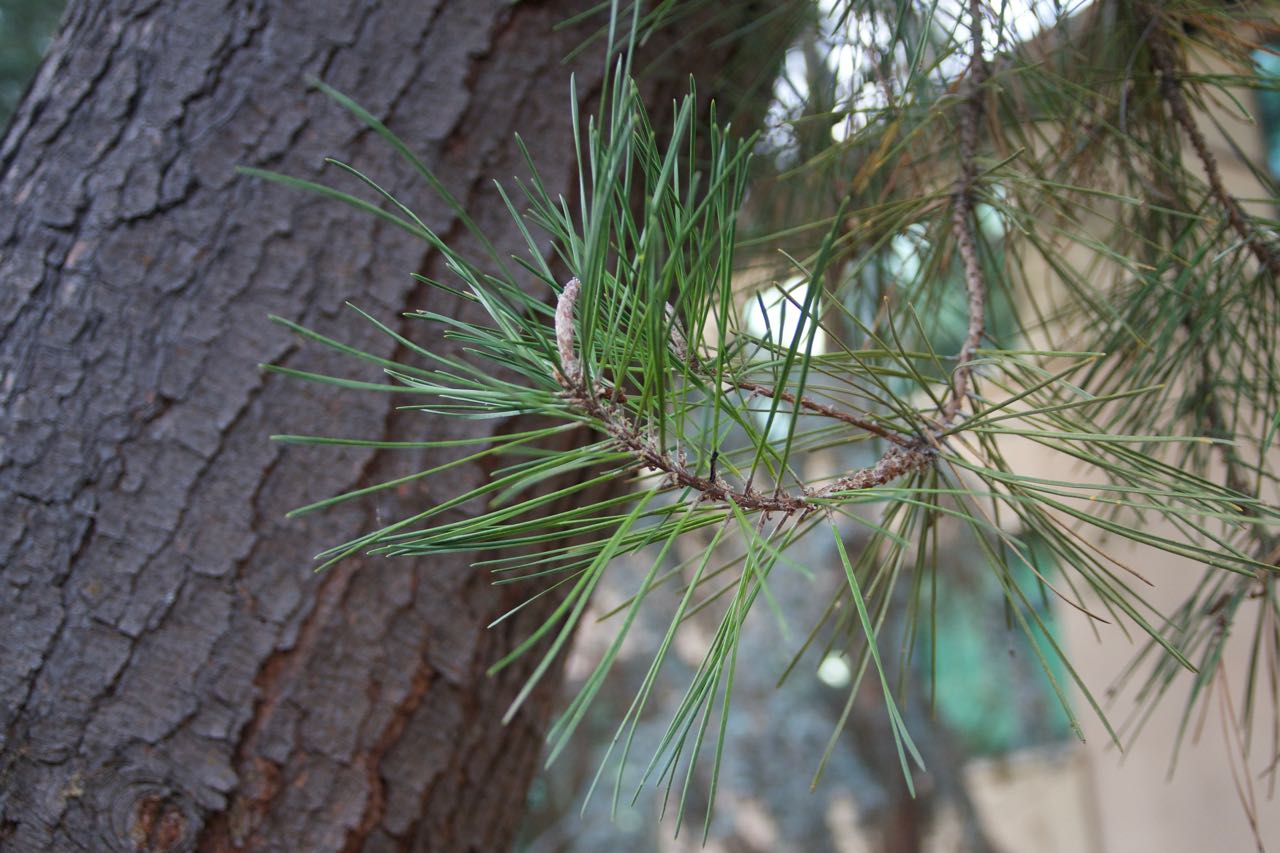
Donald Culross Peattie, in A Natural History of Western Trees (1950), wrote:
In Marin County, just north of the Golden Gate, it is often known as Umbrella Pine. For there it takes on, in billowy groves, a beautiful umbracular shape, not wholly unlike that of the Italian Stone Pines one sees in the backgrounds of Renaissance paintings. But the trees beside Mount Tamalpais look less premeditated and “set” than those beside the Bay of Naples, more unkempt and wild, as befits a tree breathed on eternally by the prevailing westerlies off the North Pacific.
Name derivation: Pinus – Latin for pine; muricata – rough with spines (the cone).
About this Entry: The main text of this entry is from the book Trees of Stanford and Environs, by Ronald Bracewell, published 2005. John Rawlings subsequently added several locations (c 2006). Landau pair noted as reduced to one (SP, Dec 2018). Casper Dining pair added, location edits (May 2024, SP).

